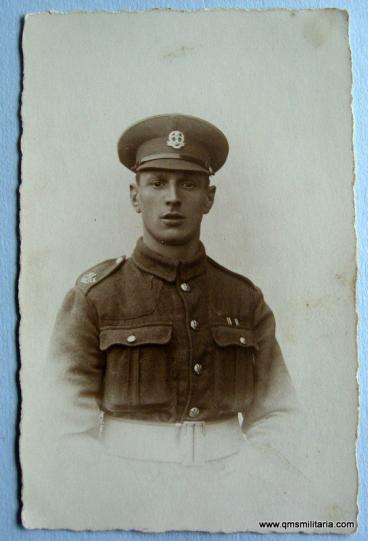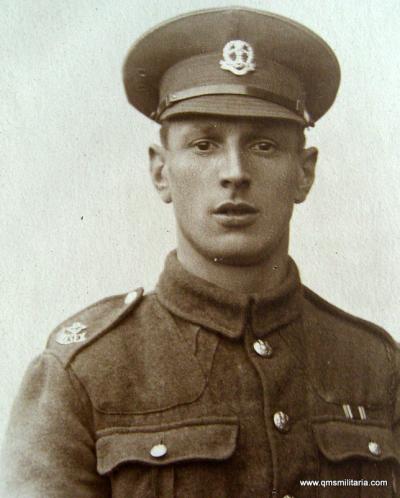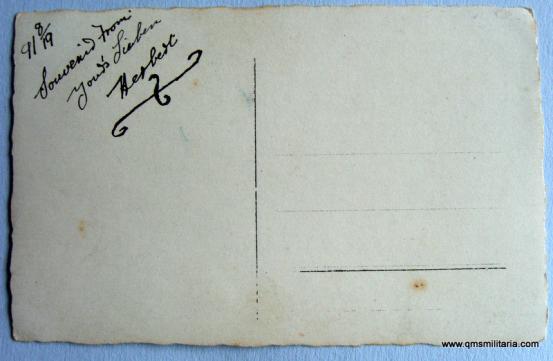Scarce Original WW1 Black & White Postcard - Private Soldier 23rd Battalion ( 2nd Football Battalion ) The Middlesex Regiment
Postally unused, but a message of greeting in ink to the reverse (from your Lieben (Your Love) Herbert. Smart looking soldier, taken circa 1919 (Army of Occupation), he wears BWM ribbon, with clear 23 Middlesex Shoulder Title not listed in Westlake!), and Middlesex Regiment Cap Badge. In very good condition.
The 23rd (2nd Football) Battalion, Middlesex Regiment (Duke of Cambridge's Own) was raised in London on the 29th of June 1915 by W. Joynson Hicks MP. Apart from more professional footballers, The ranks of the 23rd Middlesex, like the 17th Middlesex ( 1st Football Battalion ) who preceded them, were further swelled by numerous amateur players, officials and football fans eager to serve alongside their favourite players.
They trained at Cranleigh and in November joined 123rd Brigade, 41st Division at Aldershot. They proceeded to France in the first week of May 1916, and the division concentrated between Hazebrouck and Bailleul. In 1916 they were in action at the Battle of Flers-Courcelette and The Battle of the Transloy Ridges on the Somme. In 1917 they fought during The Battle of Messines, The Battle of Pilkem Ridge, The Battle of the Menin Road and took part in the Operations on the Flanders coast. In November the Division was ordered to Italy, moving by train to Mantua. The Division took the front line near the River Piave, north west of Treviso. In February they were summoned back to France and departed from Campo San Piero, travelling by train to concentrate near Doullens and Mondicourt. They were in action during The Battle of St Quentin, The Battle of Bapaume and The Battle of Arras before moving to Flanders for The Battles of the Lys. They were in action during the Final Advance in Flanders, at Courtrai and Ooteghem. At the Armistice the advanced units were at Nederbrakel, Tenbosch and the River Dender. 41st Division was chosen to join the Army of Occupation, and on 12 January the Division took over the left section of the Cologne bridgehead. Demobilisation began; in March 1919 and the Division was renamed the London Division.
A66.1
Code: 55781




